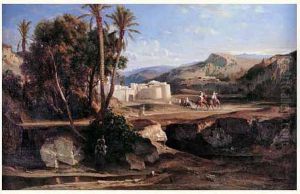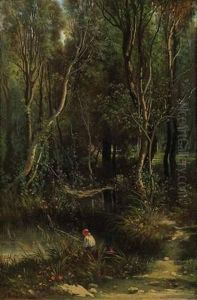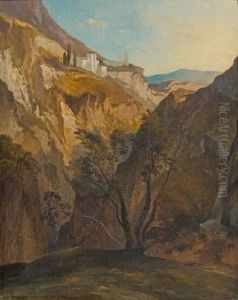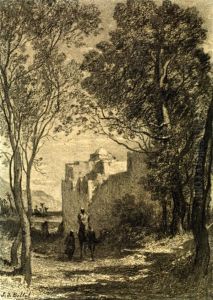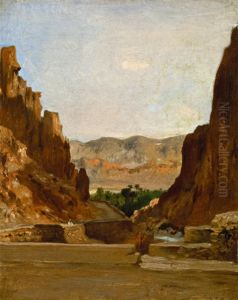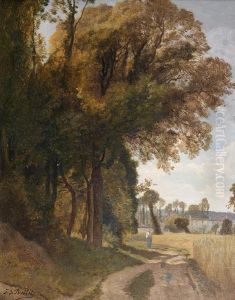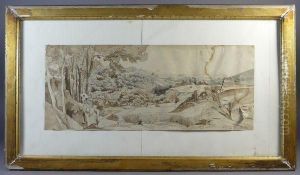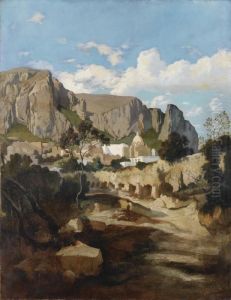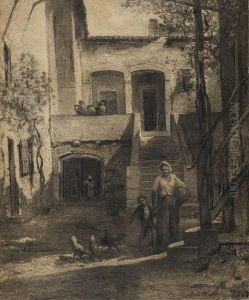Jean-Joseph Bellel Paintings
Jean-Joseph Bellel was a distinguished French painter and engraver, whose work spanned the mid to late 19th century. Born in 1816, Bellel's artistic journey began at a young age, under the tutelage of his father, who was also an artist. This early exposure to the arts profoundly influenced Bellel, setting the foundation for his lifelong pursuit of artistic excellence. He later honed his skills at the prestigious École des Beaux-Arts in Paris, where he studied under renowned masters of the time. Bellel's talent quickly garnered attention, leading to his participation in the Paris Salon, an annual art exhibition that was the pinnacle of an artist's career in France during the 19th century.
Bellel's body of work is characterized by his meticulous attention to detail and a profound sense of realism, traits that distinguished him among his contemporaries. Although he was proficient in various genres, his portraits and historical scenes were particularly celebrated for their depth of emotion and technical precision. Bellel's ability to capture the essence of his subjects made his work highly sought after, not only in France but across Europe.
Throughout his career, Bellel also engaged in engraving, a discipline that allowed him to explore the interplay of light and shadow with remarkable finesse. His engravings, often based on his paintings, were acclaimed for their intricate detail and artistic sensitivity, further cementing his reputation as a master of his craft.
In addition to his artistic endeavors, Jean-Joseph Bellel was deeply committed to the education of future generations of artists. He served as a professor at the École des Beaux-Arts, where he shared his knowledge and passion for art with young students, many of whom went on to achieve their own acclaim.
Jean-Joseph Bellel's contribution to the art world extended beyond his own creations. His dedication to the craft and his influence on the artists he taught left an indelible mark on the French art scene of the 19th century. He passed away in 1898, leaving behind a legacy of artistic excellence that continues to inspire and captivate art lovers and historians alike.
